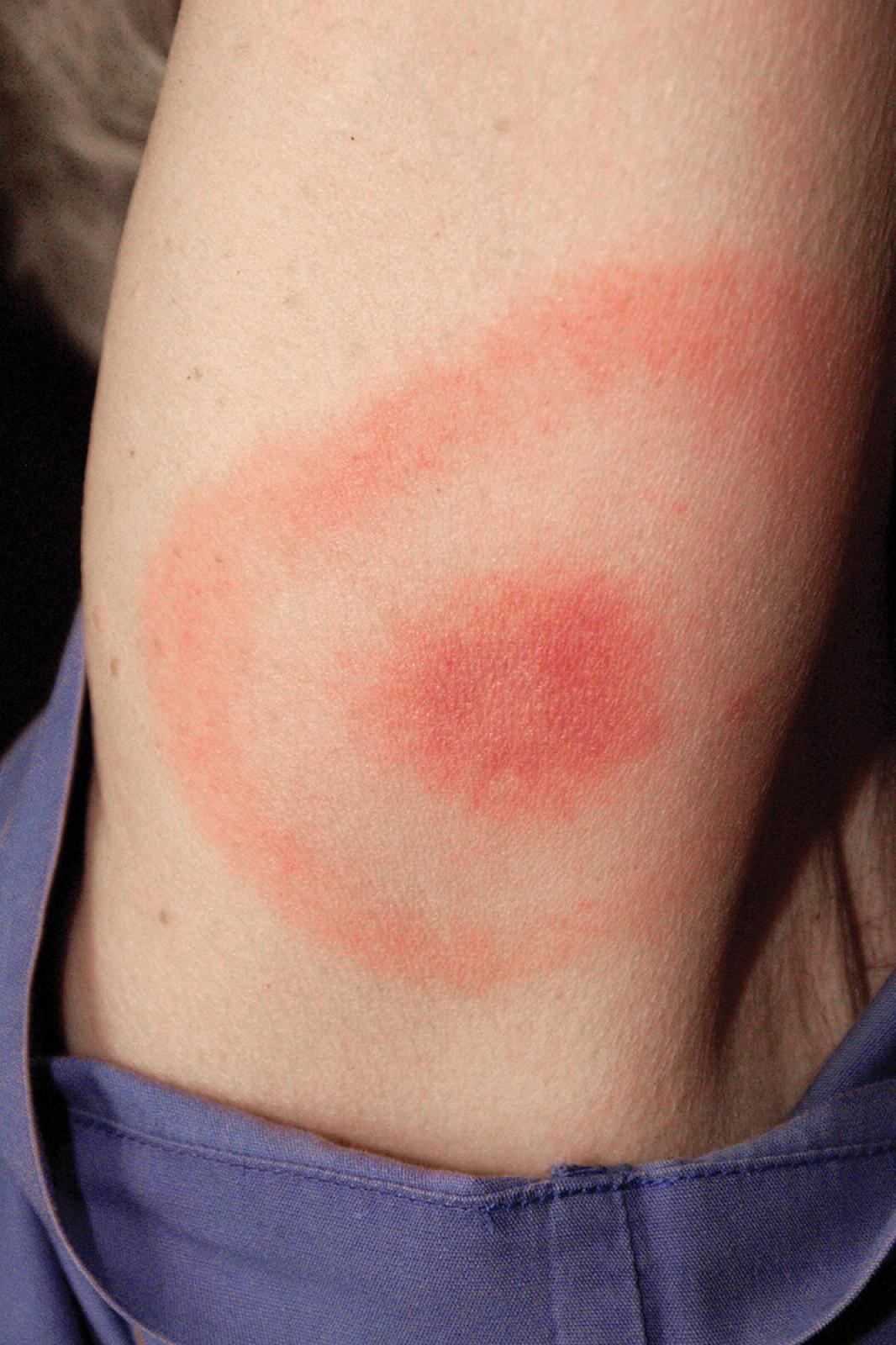May 15, 2015
LO member concerned over Lyme disease awareness

A circular ‘bullseye’ rash at the site of a tick bite is often the first sign of Lyme disease infection.
“People are misdiagnosed with stroke, MS or other diseases that had the doctors treated them for Lyme disease, they would get better. If people and/or doctors were more aware and patients received proper treatment, this would not be getting as bad as it is,” says Hunter.
She knows from first-hand experience about the effects of Lyme disease. “Having Lyme disease was the absolute worst eight to nine months of my life. My doctor told me ‘it will just go away.’ It doesn’t. If I would have accepted that as an answer, I would probably be suffering with Stage Three, chronic Lyme disease.”
Statistics show that in the U.S. there are many more cases of Lyme disease than in Canada. About 300,000 cases of Lyme disease are diagnosed in the U.S. each year, according to data from the U.S. Center for Disease Control and Prevention (CDC). According to the Public Health Agency of Canada (PHAC), only 315 cases of Lyme disease were reported in 2012.
Hunter says it’s not because it’s not happening in Canada. “It’s because doctors aren’t diagnosing and treating it here. If you go to a doctor in Canada, they will say you don’t have it. Go across the border and be tested and you will be diagnosed. Canada has assumed the ostrich position toward Lyme for decades. It’s crazy! Lyme disease is treatable if caught early, but we need to be aware of what to watch for and doctors need to know how to treat and not have to worry about being sued if they treat.”
Lyme disease has three stages and if it is left untreated and gets to Stage Three, people are confined to beds, wheelchairs, etc., suffering from chronic pain. “There’s no reason for this,” says Hunter. “It’s treatable.’
Lyme disease is a potentially debilitating illness that is a growing threat to Ontarians who spend time outdoors. The bite of a tick infected with Lyme bacteria can cause terrible fatigue, pain, memory loss, and scores of other symptoms. Without early and appropriate antibiotic treatment, the disease leads to multi-system breakdown, which often mimics other conditions such as fibromyalgia, multiple sclerosis, lupus and Parkinson’s disease.
The number of infected ticks is rapidly increasing in the province and Ontarians can be bitten by an infected tick anywhere outdoors. Those in the landscaping industry need to be aware of the problem.
There are increasing populations of infected ticks in Ontario. The Public Health Agency of Canada has identified some of the risk areas as being the shore lands of Lakes Erie and Ontario and Kingston, east to Cornwall and north to Ottawa. Recently the Rouge Valley in Toronto was also identified. It is projected that by 2020, about 80 per cent of residents of Eastern Canada (including Ontario) will be living in areas known to have established populations of ticks. Right now, Ontario is not prepared to deal with what the Public Health Agency of Canada has called “a likely epidemic of Lyme disease.”
The Ontario Lyme Alliance (OLA) in Markham says there are several reasons why the way in which this disease is dealt with in Ontario needs to be changed and improved through a new provincial strategy:
- Cases of the disease are often misdiagnosed or undetected in Ontario due to a lack of awareness and poor public and physician education.
- Canadian blood testing for the disease has very limited reliability — a fact that has been recognized by Health Canada.
- Ontarians who develop late-stage Lyme disease after not receiving early, appropriate, and sufficient antibiotic treatment are unable to receive treatment in Ontario because of outdated and restrictive treatment guidelines. Once they finally receive a diagnosis of Lyme disease (often by out-of-country physicians/labs), many patients resort to travelling to the U.S. to receive the treatment they need at great personal expense. However, countless others cannot afford to do so as the disease has rendered them unable to work and thus they are left severely ill and dealing with financial hardships.
The Ontario Lyme Alliance has been advocating for a provincial strategy to address these issues which would safeguard Ontarians from this terrible disease. The OLA has met with politicians and various government and medical organizations, such as Public Health Ontario and the Ministry of Health and Long-term Care, in order to instigate changes so that Lyme disease is better managed in Ontario.
Michael Mantha, the MPP for Algoma-Manitoulin, presented a motion to the Ontario Legislature last November that asks the Minister of Health to develop a provincial strategy for Lyme disease. The motion was carried unanimously by all three parties.
The OLA is asking for help with the next step. “According to the motion, this strategy must be developed before the deadline of November 27, 2015. Therefore, we need groups to write to the Minister of Health to ask that priority be given to the government’s commitment to create a provincial strategy on Lyme disease,” says OLA chair Bruce R. Shilton.
The address to send letters of support is The Hon. Dr. Eric Hoskins, Minister of Health and Long-Term Care, 10th Floor, Hepburn Block, 80 Grosvenor Street, Toronto, ON M7A 2C4, ehoskins.mpp@liberal.ola.org.
The OLA would appreciate receiving a copy of any letter sent. Send an e-mail to info@ontariolymealliance.ca. More information about the OLA may be found at its website at ontariolymealliance.ca.